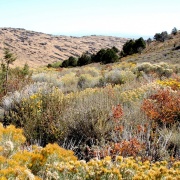BLM lifting fire restrictions for lands managed by Eagle Lake, Applegate field offices
Organization:
BLM Office:
Media Contact:
 SUSANVILLE, Calif. – The Bureau of Land Management has rescinded fire restrictions on public lands managed by the Eagle Lake and Applegate field offices in Lassen, Modoc, Plumas, Sierra, eastern Shasta and eastern Siskiyou counties in California and in Washoe County, Nevada.
SUSANVILLE, Calif. – The Bureau of Land Management has rescinded fire restrictions on public lands managed by the Eagle Lake and Applegate field offices in Lassen, Modoc, Plumas, Sierra, eastern Shasta and eastern Siskiyou counties in California and in Washoe County, Nevada.
Easing of restrictions means that public land visitors can again use campfires outside of developed campgrounds and posted recreation sites. Free campfire permits are required and are available online at http://www.preventwildfireca.org/Campfire-Permit/, or by visiting the BLM Eagle Lake Field Office, 2550 Riverside Dr. in Susanville, the Applegate Field Office, 708 West 12th St. in Alturas, and the Surprise Field Station, 602 Cressler St. in Cedarville. They are also available at all CAL FIRE and Forest Service offices.
With easing of fire restrictions, woodcutters can now operate their chainsaws all day. Chainsaws must have properly functioning spark arresters. The BLM recommends that woodcutters have shovels and water on hand.
“Even though we have cooler weather, conditions are still dry, and people need to be careful with fire,” said BLM Eagle Lake Field Manager Brian Novosak. “Fires should never be lit on windy days, and it is imperative that campers fully extinguish campfires, before leaving a campsite.”
The BLM is committed to keeping public landscapes healthy and productive. More information is available by telephoning the Eagle Lake Field Office at 530-257-0456, or the Applegate Field Office at 530-233-4666.
The BLM manages about 245 million acres of public land located primarily in 12 western states, including Alaska, on behalf of the American people. The BLM also administers 700 million acres of sub-surface mineral estate throughout the nation. Our mission is to sustain the health, diversity, and productivity of America’s public lands for the use and enjoyment of present and future generations.
